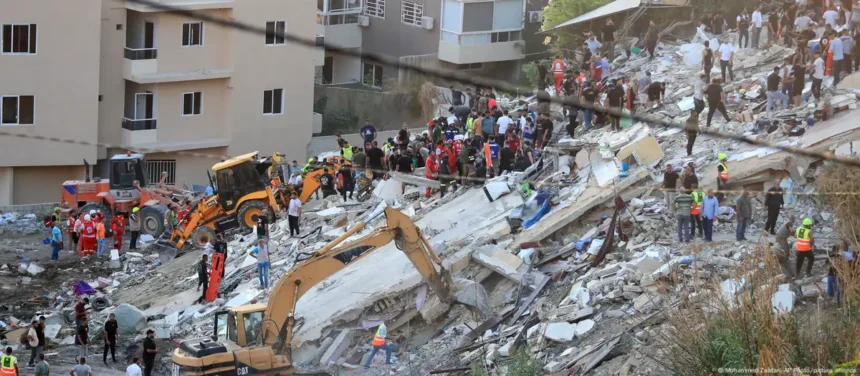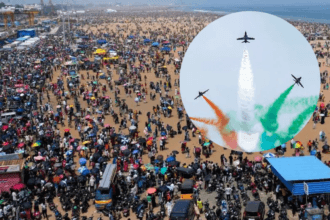Israel and Lebanon’s Hezbollah have a long-standing history of conflict. The recent escalation, with Israel expanding attacks on Hezbollah in Lebanon and the Houthis in Yemen, has stirred fears of a regional war in the Middle East. This article delves into the history of the Israel-Hezbollah conflict, the current situation, and its potential implications.
The Israel-Hezbollah Conflict: A Historical Overview
The Israel-Hezbollah conflict traces its roots back to the 1980s when Hezbollah emerged during the Lebanese Civil War. Formed as a Shiite resistance group backed by Iran, Hezbollah sought to counter Israel’s presence in southern Lebanon. Over the years, this group evolved into a formidable paramilitary and political force in Lebanon.
1982-2000: The First Phase of Conflict
The early years of the conflict were marked by Israel’s invasion of Lebanon in 1982 to drive out the Palestine Liberation Organization (PLO) forces. During this period, Hezbollah began to gain prominence, launching guerrilla attacks against Israeli forces and the South Lebanon Army (SLA). After years of persistent warfare, Israel withdrew from southern Lebanon in 2000. Hezbollah hailed this withdrawal as a significant victory, cementing its status as a leading resistance movement in the Arab world.
2006 Lebanon War
Tensions between Israel and Hezbollah continued to simmer, eventually erupting into a full-scale war in 2006. The conflict was triggered when Hezbollah launched a cross-border raid, capturing two Israeli soldiers. Israel responded with a massive military campaign, targeting Hezbollah positions in Lebanon. The 34-day war resulted in heavy casualties on both sides and widespread destruction in Lebanon. The war ended with a UN-brokered ceasefire, but it failed to resolve the deep-rooted enmity between Israel and Hezbollah.
Recent Escalations: Israel Expands Attacks on Hezbollah and Beyond
Fast forward to 2024, and the Israel-Hezbollah conflict is once again at a boiling point. In recent weeks, Israel has expanded its military operations against Hezbollah in Lebanon. Israeli airstrikes have intensified, targeting Hezbollah’s command centers, weapons storage, and critical infrastructure.
Attacks in Lebanon
One of the latest strikes occurred in the village of Ain al-Delb in the southwestern Sidon district, resulting in the death of 24 people and injuring 29 others. Hezbollah has confirmed the deaths of several of its top commanders, including Ali Karaki and Nabil Kaouk, raising concerns over the possibility of a larger, more intense conflict.
The Lebanese Health Ministry has reported that Israeli attacks have caused substantial civilian casualties, including paramedics and healthcare workers. These strikes have led to a mass displacement of Lebanese civilians, with aid organizations warning of an impending humanitarian crisis in the region.
Strikes in Yemen: Expansion Beyond Lebanon
In a significant escalation, Israel has also launched strikes on Houthi targets in Yemen. The Israeli Air Force targeted power plants and a port in western Yemen, following a missile attack on Israel’s Ben Gurion Airport by the Iranian-backed Houthi rebels. This expansion of military operations beyond Lebanon into Yemen signals Israel’s broader strategy to counter Iranian influence in the region, which includes Hezbollah and the Houthis as key actors.
Current Fears: A Regional War on the Horizon?
The recent developments have heightened fears of a regional war in the Middle East. The expansion of Israeli military operations against Hezbollah in Lebanon and the Houthis in Yemen raises concerns about the conflict drawing in other regional actors, including Iran, Syria, and Gulf states.
US Involvement and Response
US President Joe Biden has expressed concerns about the possibility of a broader war in the Middle East. The US has pledged to bolster its defensive capabilities in the region, with Secretary of Defense Lloyd Austin authorizing the deployment of additional air support and increasing the readiness of US forces. The US government has also warned Iran and its proxies, including Hezbollah, against targeting American personnel or interests, indicating that any such actions would be met with a decisive response.
Hezbollah's Strategy and Potential Retaliation
Hezbollah’s response to Israel’s recent attacks could dictate the course of the conflict. Historically, Hezbollah has adopted a strategy of asymmetrical warfare, utilizing guerrilla tactics, missile strikes, and cross-border raids. The group’s leader, Hassan Nasrallah, had been a prominent figure in orchestrating Hezbollah’s operations until his reported death in a recent Israeli airstrike. Hezbollah’s loss of key commanders may prompt a shift in its tactics, possibly leading to intensified retaliation.
There is also concern that Hezbollah may launch more missile strikes on Israel, targeting key cities and infrastructure. Such actions could provoke a larger Israeli military response, pushing the region closer to full-scale war.
Humanitarian Crisis in Lebanon
The intensifying conflict in Lebanon is already resulting in a significant humanitarian crisis. Aid organizations have reported mass displacement, with more than 200,000 people forced to flee their homes in search of safety. The Lebanese Health Ministry has condemned the repeated attacks on medical centers, highlighting the growing dangers faced by civilians and healthcare workers.
The situation is dire, with increasing numbers of casualties and widespread panic among the population. Aid workers have stressed the urgency of humanitarian assistance as safe places in Lebanon dwindle due to the expanding conflict. The possibility of a full-scale war poses a severe risk not only to Lebanon but also to the stability of the entire region.
Implications for Regional Security
The ongoing Israel-Hezbollah conflict has the potential to spiral into a broader regional war. The involvement of Iranian-backed groups like Hezbollah and the Houthis in Yemen points to the complex geopolitical dynamics at play. Iran’s influence over these groups makes it a central figure in the conflict, adding another layer of complexity to an already volatile situation.
If the conflict continues to escalate, neighboring countries such as Syria, Jordan, and Gulf states could be drawn into the fray, leading to a multi-front regional conflict. This potential scenario underscores the importance of diplomatic efforts to de-escalate tensions and prevent a full-scale war.
Conclusion
The Israel-Hezbollah conflict, rooted in decades of hostility, has reached a critical point with Israel expanding its military operations in Lebanon and Yemen. The recent strikes, resulting in the deaths of key Hezbollah commanders and widespread civilian casualties, have raised fears of a regional war. The current situation in Lebanon and Yemen underscores the fragile nature of Middle Eastern geopolitics and the dire need for de-escalation.
With the potential for broader conflict looming, the world watches as diplomatic efforts strive to contain the situation. The history of the Israel-Hezbollah conflict serves as a reminder of the complexities and dangers that come with the deeply rooted hostilities in the region. Only through concerted international efforts can the region hope to avert a catastrophic war.









